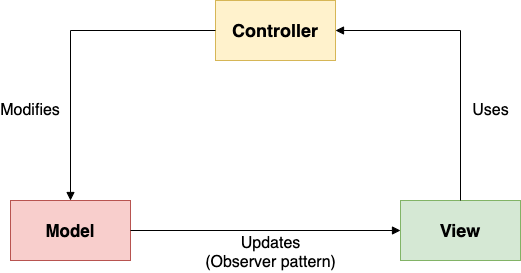The pattern is useful when UI is needed.

The Model contains the underlying data and logic that users want to see and manipulate. A key part of the MVC pattern that the model is self-contained. It has all of the state, methods and other data that it needs to exist on its own. Model focuses solely on managing the information for the system.
The View gives a user a way to see the model or at least parts of it (with buttons, images and other user interface). Responsible only for visual appearance of the system.
The Controller corresponds with control object that receives the events and coordinate actions.







